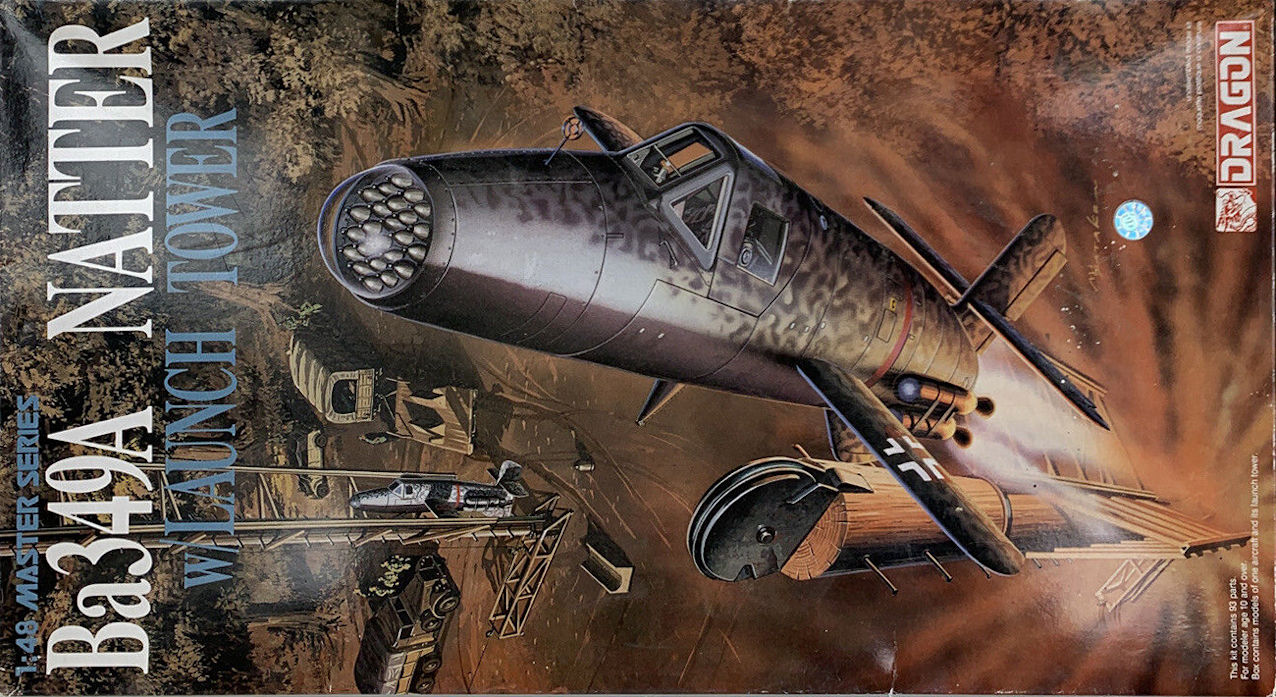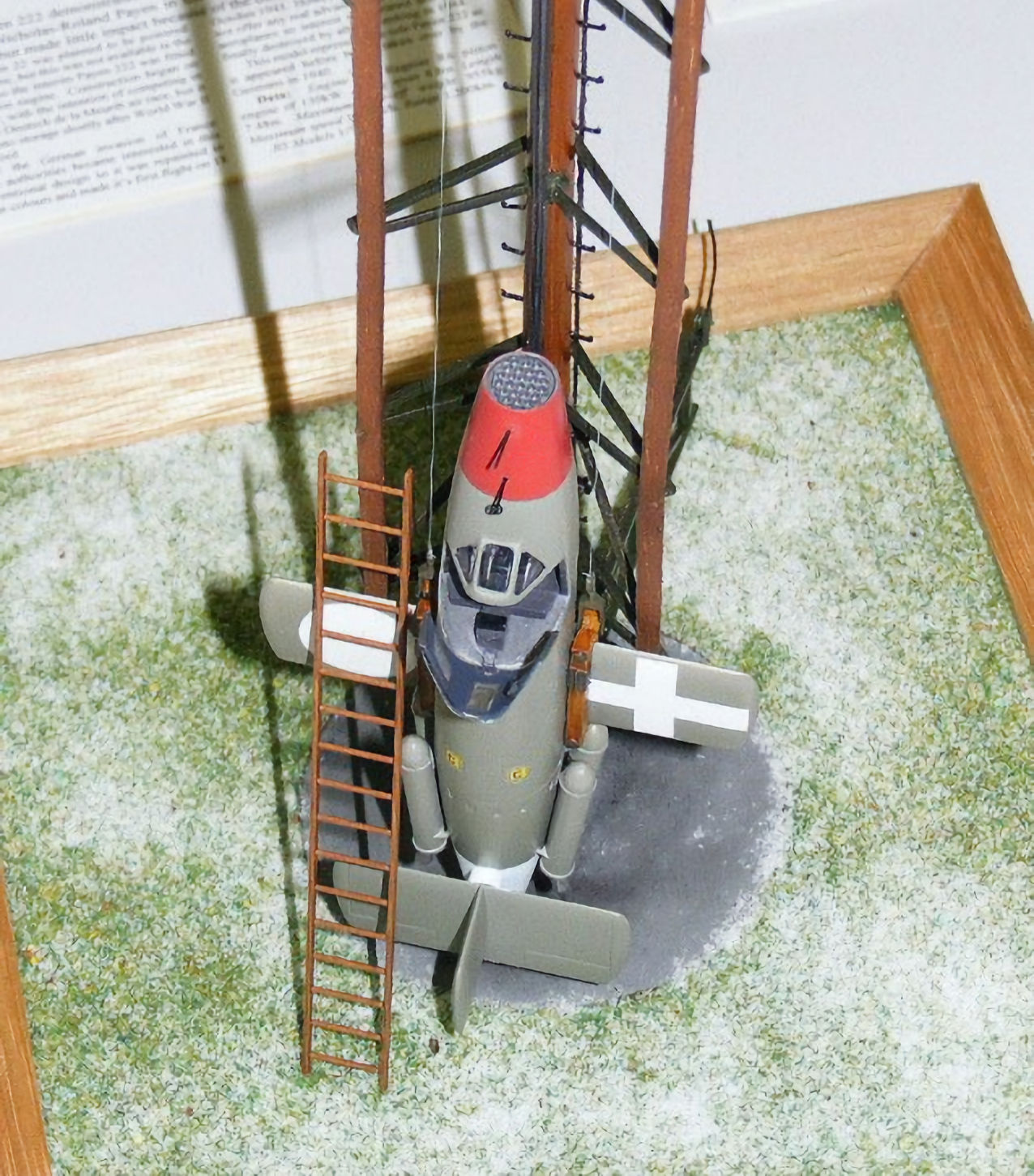Krautprojekt 1/12
In response to the editor’s plea for copy the following will describe a model of one of the most extraordinary aircraft ever flown and an episode of suicidal courage on the part of its first and only pilot.
In the autumn of 1944 things were looking bad for the Third Reich. Earlier that year the ‘Emergency Fighter Programme’ included a request for proposals for a point-defence interceptor. Dr Erich Bachem proposed a semi-expendable rocket powered interceptor which was essentially a manned guided missile.
The craft, designated Ba 349 Natter (Viper) was of simple design and constructed largely of wood. It was powered by a Walter bi-fuel rocket engine with jettisonable solid-fuel boosters for take-off. Stubby wooden wings and a cruciform tail unit were attached to a bullet-shaped fuselage. Armament was 24 R4M rockets to be fired as a salvo from the nose of the craft.
The proposed attack involved a near-vertical climb over the attacking bomber formation, where the pilot would select a target and fire the missiles. A second target was then selected for a ramming attack. The pilot would aim the craft at the target, and then by means of a lever would release the canopy and simultaneously split the craft into two parts as he baled out. The rear half, containing the valuable rocket motor, would deploy a parachute and could be recovered and re-used. The front half would continue on to hit the target.
Dr Bachem recognized the high risk of the project(!) and proposed that the take-off and climb to altitude would be controlled by a radio-radar link from the ground, with the pilot assuming control once altitude was reached.
The project found favour with the SS and the Bachem-Werk was instructed to develop prototypes. The first of these (M1) was completed in October 1944.
Wind-tunnel testing and unpowered glide flights had proved the feasibility of the proposal and a number of unmanned powered launches were successfully completed before a manned flight was attempted. Speeds of the order of 1100Km/h were attained and dummy pilots were successfully recovered by parachute.
On March 1, 1945 the first and only piloted Natter test flight took place. The pilot was 22 year-old Leutnant Lothar Sieber, an experienced test pilot who had been reduced to the ranks following court martial after going AWOL. Some sources indicate that he was told he would be promoted to Oberleutnant if he agreed to fly the Natter. The night before the flight he made out his will in favour of his fiancée, Gertrud Naudit, a Luftwaffenhelfer.
The flight was delayed but eventually began at 1200hrs. There was low cloud at Heuberg and snow lay on the Truppenübungsplatz (Army training field) where the launch ramp was prepared, with Natter M23 in place.
Leutnant Sieber climbed aboard and the ground crew secured his harness and closed the canopy.
The flight lasted 55 seconds. The canopy was seen to detach from the craft then it disappeared through the cloud. It is thought that one of the four booster rockets had failed to detach during the climb, causing the craft to become unstable. It was seen to dive under power through the cloud and strike the ground with a tremendous explosion. The crater at the crash site was about 7m deep. Very little of the craft or Leutnant Sieber remained.
Historical reconstruction of the flight indicates that Lothar Sieber may have been the first man to exceed the speed of sound.

The Dragon 1/48 Ba 349
A simple aircraft generates a simple kit and most of the parts are of the associated structures. Dragon’s kit exists in two forms, one is the prototype form with a complex launch tower. The other is the “production form” which comes with engine for a technical diorama or with the later simplified style launch tower.
The kit I built was the last version with the late style launch tower that looks as if it is a converted telephone pole.
In addition to the craft there is a display base and parts of the winching equipment used to position the craft on the tower. It looks a bit bare without a winch, however.
The late style launch tower is a wooden post consisting of two parts with attached metal brackets and wooden stabilizing rails. I broke one of the latter and made replacements from balsa. The most difficult part was the cable and bridle with the wooden brackets around the wings.
The construction of the craft is very simple apart from a few small items of photo-etch for the cockpit and the rudimentary sighting device for the rockets (No rivets!).
The only pictures showing a Natter on this type of tower are of a late version with modifications to the tailplane and some odd geometric symbols painted on the stub wings.
The Fly models 1/32 Natter has this craft in RLM02 with a red nose and white symbols. Other sources give the craft as dark green (?RLM 83) with yellow symbols. Either way it is an easy job and when done looks pretty good. I didn’t go with the tailplane mods as the preserved craft doesn’t have them and they look a bit silly.
With the kit completed I am now looking at a Hanomag SS100 tractor. The Wespe models rendition of this in 1/48 has a really nice winch to which I propose to attach the loose end of the cable.

Mark Pilbeam
April 2012
